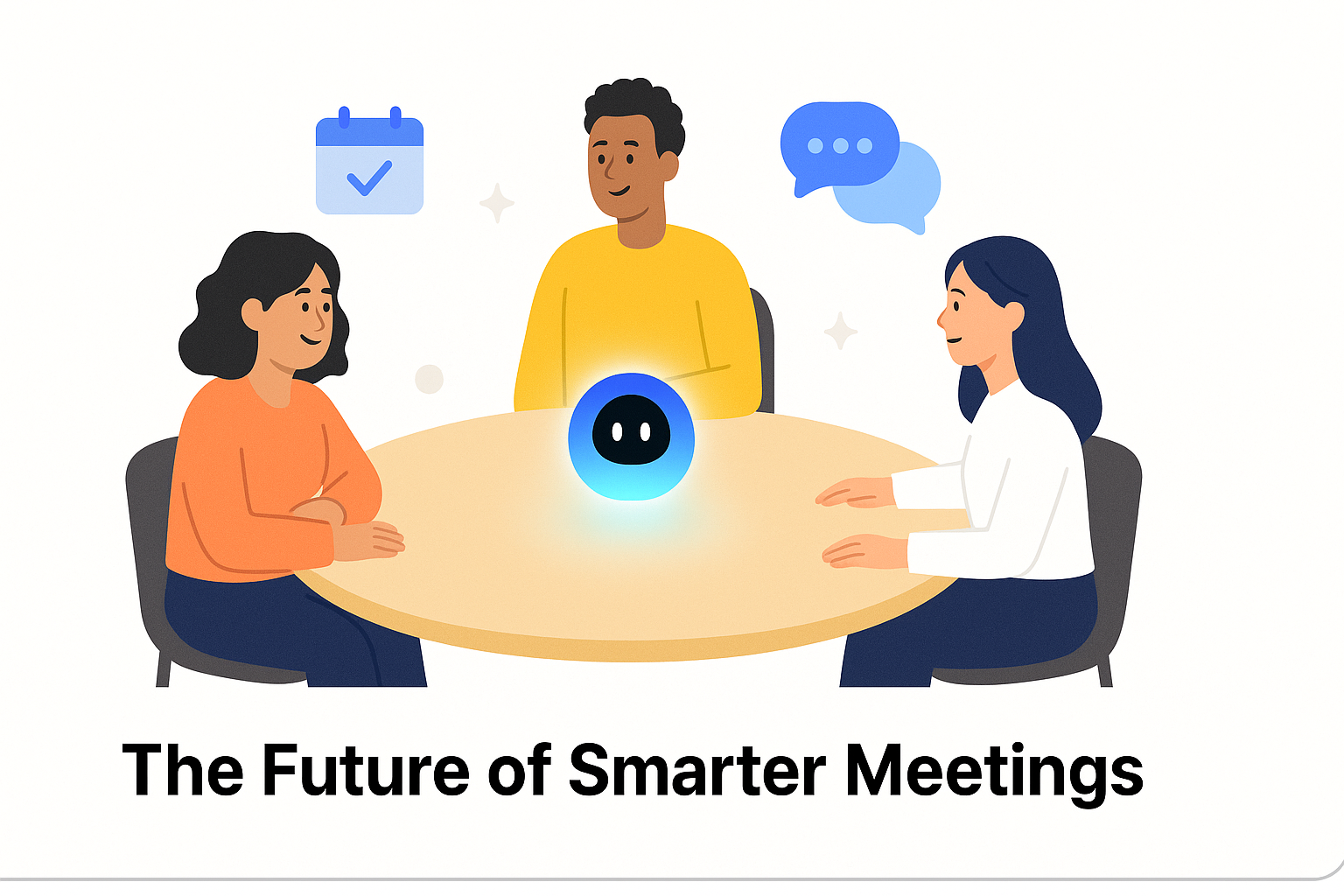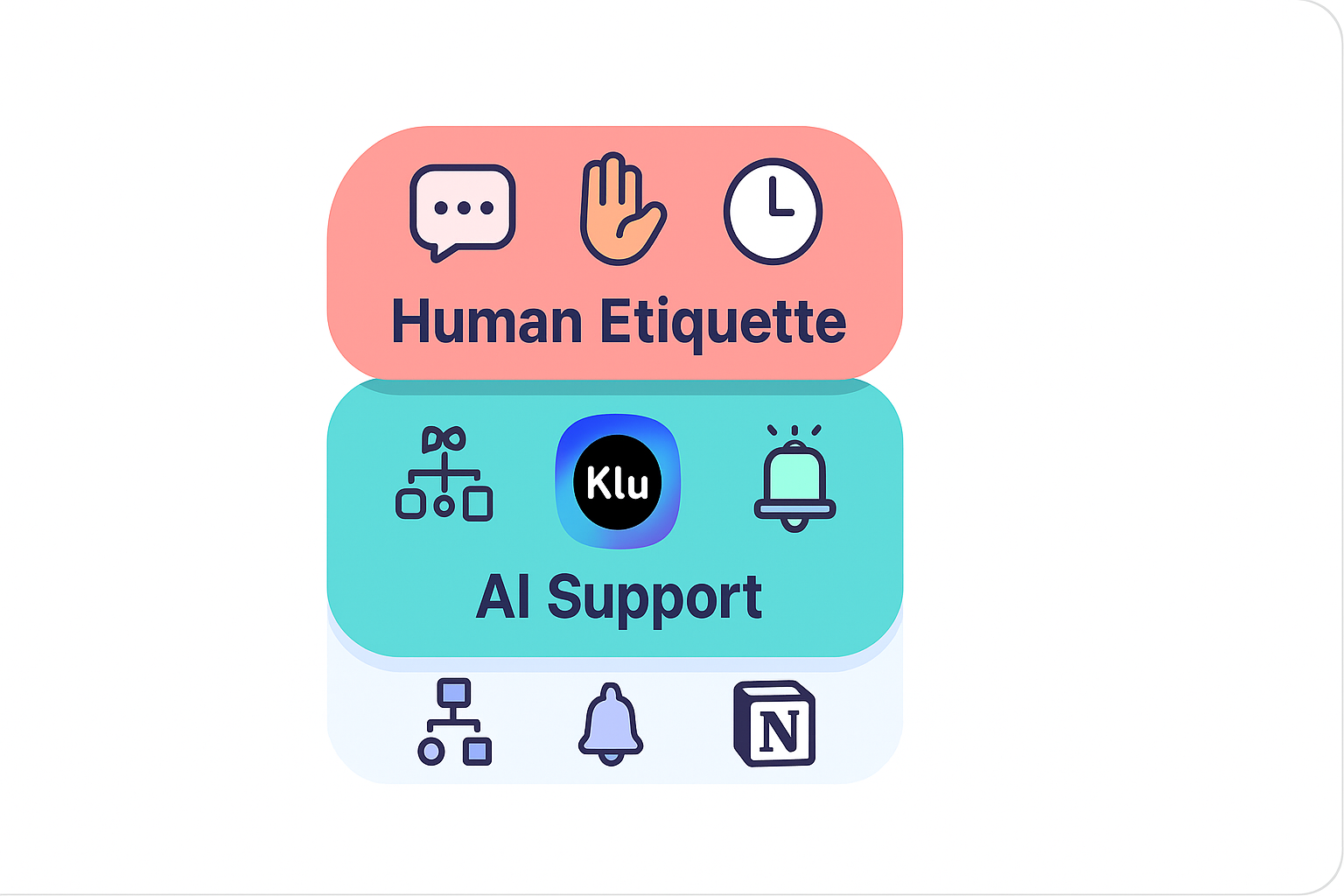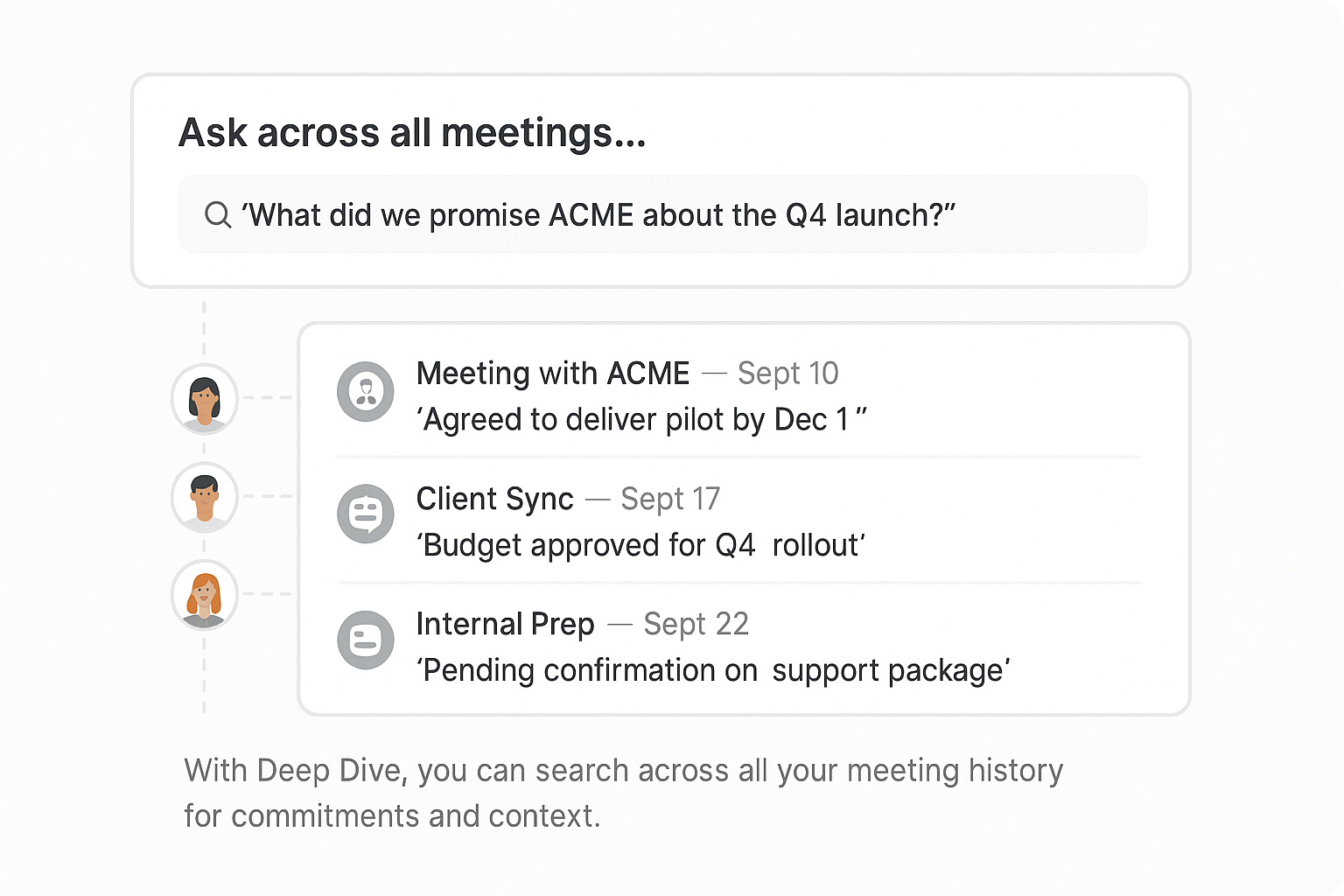 Sami AZ
Sami AZ
Meetings have long been the backbone of team alignment and decision making. Yet even now, many meetings feel inefficient, voices get lost, follow-ups slip, and context vanishes. In 2025, teams that combine meeting productivity and communication intelligence with AI meeting assistants will leave old methods behind.
In this article, you will learn:
Let us begin exploring this future of smarter meetings.
Meetings have grown in number and importance. According to one source, modern tools let you convert audio to text for clearer meeting records, but up to 80 % of meeting information is lost within a week.
In parallel, AI adoption is expanding: McKinsey reports that employees use AI more than leaders expect, and many see AI as a productivity multiplier.
But capturing transcripts is not enough. Effective meetings require clarity, follow-up, and shared context. That is where meeting communication and automation become essential.
Even with AI in the room, how people show up still shapes outcomes. The human layer of respect, structure, and clarity sets the stage.
Here are updated norms:
Have your audio, video, and platform set up early. Hybrid meetings demand that both in-room and remote participants can see and hear clearly.
Clear goals reduce drift. A shared agenda helps everyone prepare and decide whether the meeting is even necessary.
Background noise distracts everyone. Mute yourself until you need to speak. Use headphones if possible.
Good lighting, neutral backgrounds, and eye-level camera placement all contribute. Speak clearly, slowly, and avoid overlapping others.
Start and end on schedule. Before closing, recite action items, assign owners, and confirm due dates.
Ask quieter participants, rotate speaking time, and avoid domination by one voice. AI meeting assistants can help surface missing voices.
If you want, embed a visual (diagram or illustration) here showing “Human + AI Meeting Etiquette Stack”:

When AI joins your meeting stack, it does more than listen, it acts. Let us explore the major shifts:
AI meeting assistants extract themes, decisions, blockers, and action items, not just full transcripts. Many tools in 2025 include these core capabilities.
No more copying notes into Slack or Notion manually. Tasks are generated, assigned, and synced automatically with proper context.
Ask questions like “When did we promise product delivery to ACME?” and get consolidated results across multiple calls. Traditional tools do not provide that recall.
AI can track who speaks most, detect sentiment, flag “overrun” or “tangents,” and signal when summary context is needed.
Quiet voices or side comments may get lost in human summaries. AI ensures that every voice is captured, shared equitably.
You need controls. An AI meeting assistant should support permissions, logging, and review so that automation does not become a liability.
Some research (e.g. “AreWe On Track?”) shows that AI can help meetings stay aligned with goals through reflection prompts, without being disruptive.
Together, these shifts push meetings from heavy overhead to engines of execution.
When AI is part of your meeting stack, culture must evolve:
Importantly, the human norms still matter, AI does not replace responsibility. It augments it.
Klu is built to lead in this evolved meeting paradigm. Here’s how:
Klu does not stop at notes. It orchestrates the full cycle: summary extraction → tasks → sync → alerts.
Klu surfaces communication patterns, speaking balance, and sentiment layers to help leaders see team dynamics.
Each meeting (standup, recap, client call) can invoke custom logic: what to extract, where to send it, how to map owners.
Klu links with Slack, Notion, HubSpot, Pipedrive, making sure meeting outcomes materialize in your existing stack.
Klu supports powerful queries across all meetings, helping you recover past context instantly.
When a sync or mapping fails, Klu surfaces the error, allows correction, and retries. Nothing invisible.
Role-based access, audit logs, permission boundaries, these are native in Klu’s architecture.
With this design, Klu helps embed meeting productivity and communication intelligence into your team’s DNA.

Balancing automation with trust is key.
Q1: Will AI meeting assistants kill real discussion?
No. The goal is augmentation, not replacement. AI carries the burden of capture and follow-up so human energy stays on purpose and insight.
Q2: How accurate are AI summaries and task extraction?
They are improving rapidly. Expect occasional errors, robust systems offer correction workflows. Over time the AI learns your team’s patterns.
Q3: Do participants need to consent to AI capture?
Yes. Transparency and consent are critical. You should inform attendees and allow opt-out when necessary.
Q4: How do you deal with ambiguous statements?
Human review is essential. Include mechanisms to flag ambiguous content and invite manual confirmation.
Q5: Can AI detect sentiment, tone, or risk language?
Yes, advanced systems can flag negative sentiment or trigger alerts on words like “delay,” “blocked,” or “issue.”
Q6: What about meetings in multiple languages or accents?
Support for multilingual transcription is increasing. AI models focus on accent adaptation and fallback correction.
Q7: Will AI overload our inbox with tasks?
Not if designed well. Good systems rate-limit, group tasks, and allow review before sync to avoid noise.
Q8: Can AI recall past commitments across dozens of meetings?
Yes. Deep query is a key differentiator. AI meeting assistants with memory let you ask questions like “What promises did we make last quarter?” and get answers.
Q9: Is this approach only for large teams?
No. Even small teams benefit from clarity, recall, and removal of manual note burden.
Q10: What’s next after implementing AI meeting assistants culturally?
Refine templates, track quality metrics, enforce review loops, and continually train based on feedback to minimize error and maximize trust.
This is a turning point for meetings. The next wave is not transcription alone, it is meetings infused with automation, memory, and communication intelligence.
When your team lives in a world where meeting productivity is built in, not bolted on, where etiquette and AI work together, you unlock clarity, velocity, and agility.
If you are curious how to begin, start with simple meeting templates, inform participants, and layer in AI step by step. Before long, your meetings will stop being overhead and start being engines of execution.
Ready to move beyond transcription? Try Klu Free.